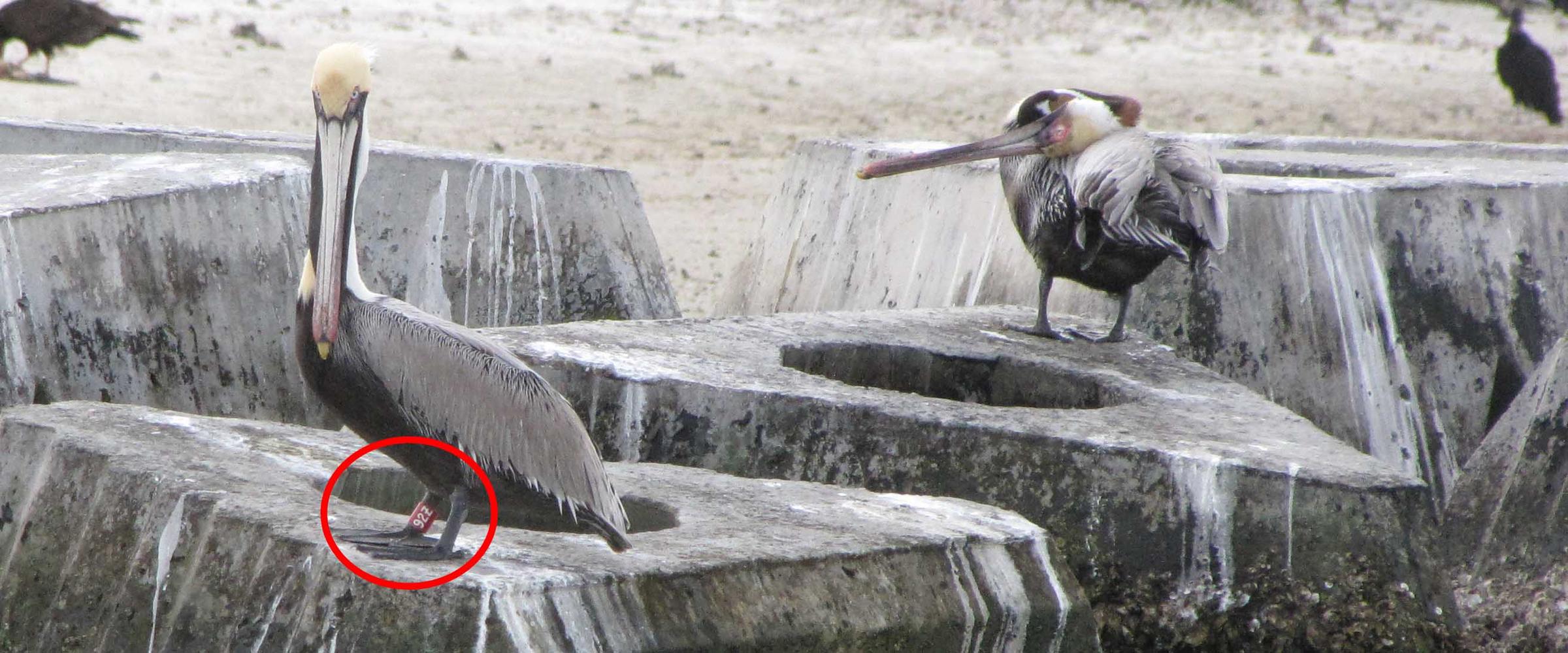The Deepwater Horizon Disaster in 2010 endangered the economies of coastal communities, saturated marshes and wetlands with oil, and smothered thousands of birds in oil. Despite millions of gallons of oil flooding into the Gulf of Mexico, two surviving pelicans from the disaster recently gave Audubon biologists new hope for the fate of rescued and treated bird victims. In 2010, they were rescued, cleaned, and safely released in Florida. These two survivors were spotted at the Richard T. Paul Alafia Bank Bird Sanctuary near Tampa, Florida.
The first of the two rescued pelicans was spotted in April 2013 by Erik Johnson, Audubon Louisiana’s Director of Bird Conservation, on a visit to the Richard T. Paul Alafia Bank Bird Sanctuary, which is leased from and managed in collaboration with The Mosaic Company. The pelican was banded with the code R(red)0Z4. Peter Tuttle, a biologist with the U.S. Fish and Wildlife Service (USFWS), reported R-0Z4 was an adult male rescued in Louisiana in June 2010 and transported to the nearby Fort Jackson Wildlife Rehabilitation Center. R0Z4 was moderately to heavily oiled and lethargic and weak when rescued. In addition, Dr. Erica Miller with Tri-State Bird Rescue & Research noted that once healthy enough, R0Z4 was banded and released on July 7, 2010 at Fort De Soto Park in St. Petersburg, Florida. Johnson's April 2013 sighting was the first of this bird in the 1,553 days after its release!
Audubon Sanctuary biologists have seen R0Z4 two more times at the Alafia Bank (in 2014 and 2015) and suspect he was one of the 800+ Brown Pelicans that nested at the Alafia Bank.
Another banded pelican sighting was recent - on February 20, 2018. Audubon Sanctuary biologists spotted R(red)92Z roosting on the breakwater at the Alafia Bank (photo above). Tuttle informed us that R92Z was a juvenile male pelican rescued in Louisiana in June 2010. R92Z was moderately oiled and also released at Ft. De Soto after treatment. With delight, Miller noted Audubon's February 2018 resighting is the first sighting since R92Z's release in 2010!
Audubon biologists estimate R92Z is at least nine years old, and he has been spotted a few more times at the Alafia Bank since first being spotted on February 20, 2018.
The Alafia Bank serves as a sanctuary for birds like these pelicans and thousands of other birds. It hosts the largest Brown Pelican colony in the Tampa Bay region and is an important bird nesting island for the entire Gulf Coast bird population. Right now, the Sanctuary is under threat of dangerous invasive trees that are crowding out the native plants that birds need. Audubon Florida has secured a matching grant to remove these invasives but still remains short of our goal. With your gift today, you can help this important sanctuary remain a refuge for rescued birds and imperiled species that depend on it.





